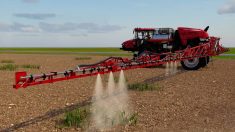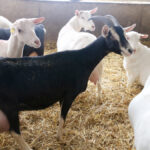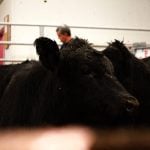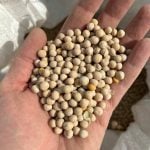Perhaps the future of biotechnology is not focused as much on increasing yields but on continuing to reduce production costs
We have all heard the popular cliché about size being important but it’s a question that seems missing in the ag biotechnology debate — specifically plant size limitations. Speakers at a recent agriculture biotechnology conference spoke at length about how GM plants and other high-tech agronomic practices had increased yields for many crops by up to 40 per cent. They noted that significant increase was critical in meeting the ever-increasing demand for food as the world population continues to grow by billions.
One presenter boldly stated that if commercial agriculture today was still using 1960s yields and technology there would be widespread hunger in the world today. Be that as it may one wonders how much more yields can be increased to keep up with the pace that has been set.
Read Also

Guarding against misinformation: Do you believe in house hippos?
Misinformation and disinformation run rampant in today’s digital age. Farmers must be wary of the digital dangers and know how to keep themselves safe.
Plant scientists point to the corn plant as the glowing example of what biotechnology and genetics can do to increase yields. The stats are eye popping indeed. I recall in the 1960s achieving yields of 100 bushels of corn per acre was considered a real goal. Today we are seeing regular yields of 200 bushels per acre with some well on their way to the 300 goal. It’s been done but weather and agronomic conditions have to be perfect.
One could get mesmerized by all the hype surrounding ever-increasing yields and they are certainly realistic for many cereal crops that have yet to see any significant GM genetic development. But what about the future yield potential of the corn plant? Can this plant get any bigger to carry even more giant ears of corn to reach those yields? Are we looking at a possible three-foot-long ear of grain corn?
Somehow I suspect the corn plant is nearing the limit of its size potential. But then its come a long way since the early days of hybridization in the 1920s — so anything may still be possible.
One could apply the same perception to cereal plants — is there a size limitation or can they be bred into the size of corn plants? Certainly at their present stage there is room for improvement by means of larger plants with bigger seed heads. But at what point do huge heads cause the plant to fall over? Is 100-bushel wheat and 150-bushel barley the limit no matter what level of biotechnology and agronomy you apply to the production practice?
Perhaps the future of biotechnology is not focused as much on increasing yields but on continuing to reduce production costs. Maybe future GM varieties will require no pesticides or herbicides and very little fertilizer. That would help grower profitability but it’s not going to help feed the billions of mouths that will need to be fed in the future.
Some observers have noted that perhaps we need to face the reality that high-tech western commercial agriculture may not be able to feed as much of the world in the future. That does seem unlikely in the immediate future as we see regular surpluses and low-price markets. They note that the focus should not be as much on expanding yields in the food-exporting countries but in dealing with some obvious resolutions that could relieve famines almost immediately.
The most immediate seems to be in resolving wastage and storage problems in logistics and distribution in food-recipient countries. Some stats indicate that up to 30 per cent of food aid is wasted, spoiled, lost or stolen before it gets to those who need it most. If that were true it would behoove donor agencies and countries to spend considerable effort and money in resolving such a huge loss. If that were occurring on an annual basis it would soon add up to some shocking numbers. But one hears little of efforts to stem such losses — perhaps it’s just factored into the cost of food aid.
Another observation about accepting yield limitations is that rather than spending more money on what may become dubious results perhaps dealing with the problem at its source is a better approach. Agronomists have noted that many of the countries that are most famine prone also have some of the better potential for feeding themselves. They note the problem isn’t as much agronomy as it is political, cultural and religious.
It’s been said that Africa may well be the greatest failure in small-scale organic agriculture in the history of the world. Zimbabwe is used as the classic example of where a thriving commercial agriculture industry was destroyed for political reasons. It turned a country that once exported food to one begging for food aid and became an economic basket case. Only African countries like South Africa, Kenya and a few others are able to feed themselves and export ag products.
Cynics are right to note that western commercial agriculture will never thrive on a continent that is so rife with political problems. Besides there is the overwhelming problem of what you do with the people who are on the land now. Modern commercial agriculture even in North America means fewer people are needed to grow more crops. Driving ever-more people off the land in Africa just to have to grow more crops to feed those same people as they are jammed into ever-increasing mega-cities seems pointless.
Having said that, better-yielding crops in Africa are a necessity but there it’s not as much about genetic limitations as it is about human limitations.














